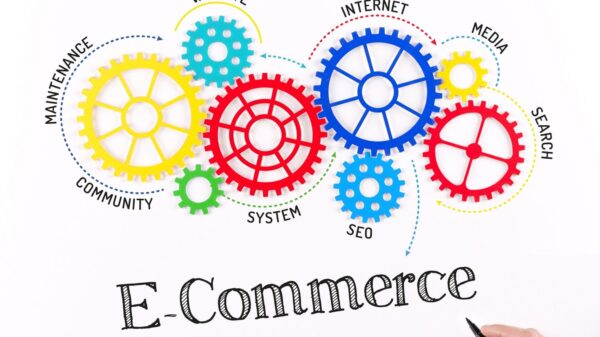Have you ever thought about starting your own online store but felt overwhelmed by the process? You’re not alone. E-commerce is one of the fastest-growing industries in the world, and for good reason—it allows anyone with internet access and a good idea to build a business from anywhere. Whether you’re hoping to sell handmade crafts, dropship trending products, or launch your own clothing line, understanding the basics of e-commerce is the first step toward success.
This guide breaks down the essentials of starting an e-commerce business, from choosing your niche to launching your online store.
What Is E-Commerce?
E-commerce (short for electronic commerce) refers to the buying and selling of goods or services over the internet. It includes everything from large-scale online retailers like Amazon to solo entrepreneurs selling handmade jewelry on Etsy. Transactions can occur through websites, social media platforms, or third-party marketplaces.
The appeal of e-commerce lies in its flexibility. You don’t need a physical storefront, and your products can reach customers across the globe. But like any business, e-commerce requires careful planning, consistent effort, and a willingness to learn.
Step 1: Choose a Niche
Choosing a niche is the foundation of your e-commerce business. A niche is a focused area of the market that caters to a specific audience or interest. Instead of trying to sell to everyone, you’re targeting a smaller group of people who are more likely to become loyal customers.
When choosing a niche, ask yourself:
- What am I passionate about?
- Is there a demand for this type of product?
- Who is my ideal customer?
- How competitive is this market?
Examples of popular e-commerce niches include:
- Eco-friendly products
- Pet accessories
- Health and wellness items
- Fitness apparel
- Home organization tools
Do a bit of keyword research and explore trends using tools like Google Trends or Pinterest to validate your ideas.
Step 2: Decide What to Sell
Once you’ve picked a niche, you need to choose specific products to offer. You can:
- Create your own products (e.g., art prints, handmade goods)
- Buy wholesale and resell (buy bulk and sell individually)
- Use dropshipping (a fulfillment method where the supplier ships directly to the customer)
- Sell digital products (eBooks, courses, templates)
Think about pricing, margins, sourcing, and logistics. Remember, your products should solve a problem or fulfill a desire for your target audience.
Step 3: Set Up Your E-Commerce Store
Now comes the exciting part—building your online store. You’ll need:
- A domain name: Your website’s address (e.g., www.yourstorename.com)
- An e-commerce platform: Choose a user-friendly platform like Shopify, Wealthy Affiliate, WooCommerce (WordPress), BigCommerce, or Squarespace.
– Turn your own Hobby/Niche website into revenue.
– Monetize content based on your interests and goals.
– Also monetize Social Media and YouTube.
– Step by step training, tools and support. Everything you need for success.
– Your own AI powered website.
– Try it FREE to see if the program is right for you. No credit card needed.
Look for features like mobile optimization, payment gateway integration, and easy inventory management. Many platforms offer drag-and-drop builders, making it easy for non-techies to create a professional-looking store.
Make sure to:
- Write clear product descriptions
- Upload high-quality images
- Set competitive prices
- Include shipping info and return policies
- Add trust signals like reviews, SSL certificate, and contact information
Step 4: Plan Your Marketing Strategy
Having a beautiful store isn’t enough. You need to get the word out. E-commerce marketing is all about visibility and engagement. Here are some key strategies:
1. Social Media Marketing
Create business profiles on platforms like Instagram, Facebook, Pinterest, and TikTok. Share product photos, behind-the-scenes content, and customer testimonials.
2. Email Marketing
Build a list of interested subscribers and send regular updates, promotions, and product launches. Tools like Mailchimp or ConvertKit make this easy to automate.
3. Search Engine Optimization (SEO)
Use keywords on your website to make sure people can find your store through Google. This includes optimizing product titles, descriptions, blog content, and meta tags.
4. Influencer & Affiliate Marketing
Partner with creators who align with your brand. They can promote your products to their audience in exchange for a fee or commission.
5. Paid Ads
Platforms like Facebook Ads and Google Ads allow you to target specific demographics. Be sure to test small budgets and track your results.
Step 5: Manage Orders and Customer Service
Delivering a great customer experience is key to repeat business and positive reviews. Here’s how to stay on top of things:
- Order fulfillment: Use inventory management software or apps to track stock and automate processes.
- Customer service: Respond quickly to questions and issues. Offer multiple contact methods (chat, email, etc.).
- Returns & refunds: Be transparent about your policies and make them easy to understand.
- Shipping: Provide clear timelines, tracking info, and delivery options.
Happy customers are your best marketers—they’re more likely to recommend your store and leave glowing reviews.
Step 6: Analyze and Improve
Once your store is live, don’t set it and forget it. Track key metrics using tools like Google Analytics or the analytics dashboard on your e-commerce platform. Look at:
- Traffic sources (where visitors come from)
- Conversion rate (how many people buy)
- Cart abandonment rate
- Best-selling products
- Customer feedback
Use this data to make informed decisions about marketing, pricing, and product selection.
Common Mistakes to Avoid
- Trying to sell too many products at once – Start small and scale as you learn what works.
- Ignoring branding – A consistent and professional look builds trust.
- Not investing in marketing – You need traffic to get sales.
- Poor product photos – Clear, attractive images increase conversions.
- Skipping market research – Know who you’re selling to and what they want.
Final Thoughts
Starting an e-commerce business is an exciting journey that offers incredible potential for growth and freedom. It does require work, but it’s also one of the most accessible ways to become your own boss in today’s digital world.
By understanding the basics—from choosing a niche to marketing your store—you’ll be in a strong position to launch with confidence. Remember, every big brand started somewhere. With the right tools and mindset, your online store can become more than just a side hustle—it can be a thriving business.
Ready to take the first step? Pick your niche, define your audience, and start building. The world is shopping online, and there’s room for your unique brand in the marketplace.
Need help choosing a platform or creating a launch plan? Drop your questions in the comments.
Here’s a little transparency: Our website contains affiliate links. If you click and make a purchase, we may receive a small commission. Don’t worry, there’s no extra cost to you.




